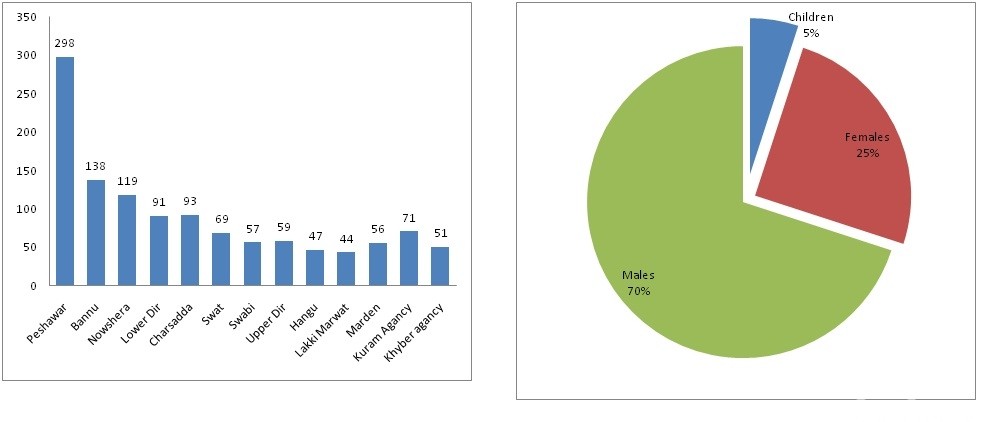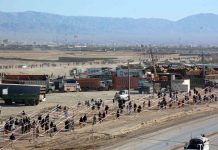Peshawar: Ranra’s first thought on finding out that she had contracted HIV/AIDS was: “How would i be remembered once i die?”
Dying, Ranra knew, was something she couldn’t help, not with a fatal disease like HIV/AIDS. But she could do something about her reputation. And like any honour-bound Pashtun woman living in a society that puts much stock in honour, she knew she had to defend hers before she dies.
“I could have died of shock and sadness but death wasn’t an option,” Ranra told News Lens, her face hidden behind a veil revealing only her eyes and a pale brow. “I had to figure out how i contracted the disease and remove the stigma associated with HIV.”
A month after her wedding, Ranra, not her real name, had tested positive for HIV. The news sounded the death knell for Ranra. She could not figure out how, where and when she had contracted the virus, but she knew well about the social stigma associated with HIV – that it was a sexually transmitted disease (STD). The stigma, she knew, would kill her before the virus did.
“The primary source of HIV infection in Khyber Pakhtunkhwa is needle-sharing among drug users,” said Dr. Atta Ullah, Deputy Director HIV/AIDS programme, Khyber Pakhtunkhwa, adding that a majority of people in Pakistan believed that AIDS happened as a result of sexual intercourse only. “A needle shared with an HIV infected person means the entire group that uses the needle is at risk.”
Nearly 30 percent of the registered patients, said Dr Atta Ullah, were infected due to sharing syringes while using drugs. Nearly 7.2 percent caught the disease due to sexual relations with men and transgenders.
Alone and afraid, Ranra sank into depression. She did not know who to turn to. Could she hope to find support in a society that would question her morals rather than extend sympathy, thought a desperate Ranra, as she contemplated the implications of her condition becoming public knowledge.

“[HIV] patients prefer death from disease than reaching out for healthcare because of the stigma,” Ranra told News Lens in her first ever interview with media. “They live an isolated life. They are excommunicated by the society and disowned by their own families.”
Data made available by the Provincial Health Department shows that the total number of HIV/AIDS cases in Khyber-Pakhtunkhwa is 16,000 with only 1,816 patients receiving medical assistance at established centres – which shows that 90 percent of HIV positive people have not consulted doctors yet.
Of the 1816 HIV patients, 5 percent are children, 25 percent are women, and 70 percent are men. Peshawar has 298 registered patients receiving treatment in HIV/AIDs care centres at Hayatabad Medical Complex, followed by 138 patients in Bannu, 119 in Nowshera, 91 in Lower Dir, 93 in Charsadda, 69 in Swat, 57 in Swabi, 59 in Upper Dir. Hangu has 47 registered patients, Lakki Marwat 44, Mardan 56, Kuram Agency 71 and Khyber Agency has 51.
Knowing she was morally upright and not involved in an extra-marital relationship, Ranra knew sex could not be the reason she contracted the disease. Did she get it from her husband, who was working overseas? What if she didn’t? Ranra kept agonizing on how she would be remembered after death if she could not prove that she was chaste, that the disease had a cause other than what the society ascribes it to.
Her dilemma: If she never revealed that she had the disease, how could she hope to find what caused it? Indeed, how could she even hope to live? She had to tell someone, said Ranra. “I had to fight my fears, learn to overcome them.”
Ranra turned to the only person she could trust with the knowledge of her disease – her mother. When she told her, the old woman was dumbstruck.
“She only talked about the social stigma, that I must have transgressed and compromised my virginity before my wedding,” said Ranra of her mother’s reaction to her condition. “She talked about the consequences and how my husband would take it. Her reaction was typical of anyone who would have said I had disgraced my name and family.”
A survey conducted by the National Aids Control Program in 2011 revealed that 30 percent of the HIV positive population were drug users. In Khyber Pakhtunkhwa, it said, the ratio of infected people due to sexual intercourse was zero.
According to Dr. Atta Ullah, Pakistanis working in the Gulf countries brought the infection home from abroad, spreading it to unsuspecting spouses and children.
“Apart from HIV positive patients deported from the Gulf countries, other high risk groups include long-distance truck drivers, sailors, women sex workers, transgender sex workers, homosexuals, intravenous drug users, prisoners, children born to infected parent(s), street children and victims of unsafe medical procedures,” he said.
Dr. Atta Ullah told News Lens that the Global Fund to Fight AIDS and National AIDS Control Programme were working to create awareness about the fatal disease.
Alienated from her family and fearing the social stain that came with the disease, Ranra chose to remain silent. A year passed and her husband returned from abroad.
“I confided in him and urged him to marry someone else for his safety, but he refused,” said Ranra. “He went in for a clinical examination and tested negative.”
Ranra and her husband wanted to keep her condition secret while seeking medical treatment, but they could not in Peshawar where they feared that relatives and friends would get to know about it.
Her physician, Dr. Yaseen, came to her rescue. He assured her that the treatment would be confidential. “I told the doctor, if anyone came to know I was HIV positive I would commit suicide.”
According to the National Aids Control Programme website, there are 15 HIV treatment and care centres across the country. They provide comprehensive HIV care services including free anti-retroviral therapy, free advanced HIV diagnostics and management of HIV-related infections and counseling services to HIV-positive people in the country. Two of these centres are in KP – one in the Hayatabad Medical Complex while another is at the District Headquarters Hospital, Kohat.
The provincial government has also been working on setting up HIV/AIDS screening centres for injected drug users. Recently, screening tests were done inside the Central Prison Peshawar, reported widely in press at Khyber Pakhtunkhwa. In February this year, the Khyber Pakhtunkhwa government had shared plans with media of establishing HIV/Aids screening and treatment centres in jails to protect inmates from the deadly disease.
According to the data provided to News Lens Pakistan by the Prisons Department Khyber Pakhtunkhwa (KP) through the Right to Information request, three male prisoners were infected with HIV in the Central Prison in Peshawar while 53 men and two women were living with Hepatitis C Virus in 22 prisons of the province. Crowded conditions in the jail are seen as the main source of transfer of diseases in the jail system.
Ranra says if it was not for the support of my husband, she would have lost the fight. She is now a mother of two healthy daughters.
According to Dr Atta Ullah, 32 HIV-positive women have given birth to healthy babies since the creation of the family care centre for prevention of AIDS at Hayatabad Medical Complex in Peshawar.
“The doctor also made my relatives and in-laws believe that I was having recurring diarrhea and needed to be admitted for treatment,” said Ranra.
Dr. Aysha Qaisar, coordinator Family Care Centre for Prevention of AIDS at Hayatabad Medical Complex said timely therapy benefited patients by not just improving the health of individuals but also lowering their viral load, reducing the risk that they would spread HIV to others and increasing the life-span of patients.
Dr. Qaisar said the social stigma associated with HIV/AIDS caused patients to remain silent and not seek treatment. Sometimes even doctors were reluctant to socialise with patients, she said, ignoring them and neglecting their health needs. This tradition, she said, had changed now that there was awareness about the disease.
“Awareness campaigns need to be conducted for people to know the disease is not transmitted by shaking hands or having meals with a patient, but because of carelessness and ignorance,” she said.
The estimated cost of treating an HIV/AIDS patient was around Rs 22,000 per month ($220), said Dr Qaisar. However treatment and drugs for HIV patients is free of cost in Hayatabad Medical Complex in Peshawar.
During the course of her treatment, Ranra met AIDS patients from Punjab and other provinces in the Hayatabad Medical Complex who chose to seek treatment in Peshawar because they feared social stigma back home.
“At the beginning of treatment and receiving training to take care of myself I felt embarrassed to death,” said Ranra. “However, my husband encouraged me. After getting training and taking medicine, I am now living a natural happy life. HIV patients are not necessarily moral transgressors. They are not dangerous but they deserve support and proper medical care rather than discrimination.”



